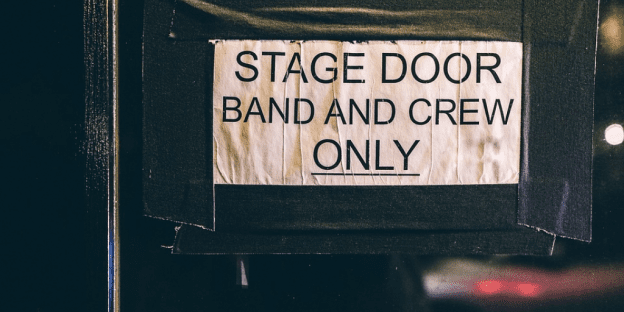The stage door. It is the thespian demarcation line between fact and fiction; between fantasy and reality. It is the place adoring fans await to see performers after a play or concert. It is a setting for autographs, selfies, and intimate relationship-building. It is the groundwater of late night conversations and golly gee whiz memories. Stage doors are the venue performers use to appear after the final curtain call–sans costume, sans makeup, sans role, sans everything. As such, it is an opportunity for authenticity and connection.
I have many times stood the sometimes 30-minute wait for the first performer to appear and wade into the admiring crowd. My cousin, Russ, is a devotee of the theater and cherishes the Playbills we send him filled with autographs from “the stars.” No trip to New York City is complete without a Broadway show followed by a stage door wait.
The stage door is also a site for people-watching. Some stars never appear; some exit and immediately depart without “serving” their fans who paid big bucks to watch their performance. Some noticeably wallow in the ego-stroking adoration. But, some are markedly grateful for their fan’s contribution to their lives and livelihood. Those are the performers that are the subject of conversations long after the streets are cleared of actors and audience. It is a lot like customer service.
Customer service is a performance. And, there are many customer service “shows in town.” Customers pay money to enjoy a crowd-pleasing experience while getting their particular needs met. But, there is always a stage door at the end—a chance to express gratitude for your fans coming to your show. Is your stage door a place for plain-vanilla activity, indifferent assumption, or enthusiastic appreciation? What does your stage door behavior signal to those you serve?
